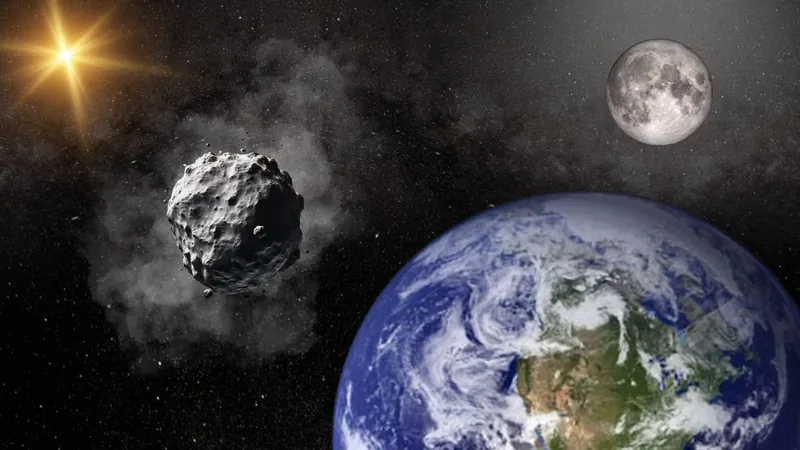
Earth Set to Greet a Temporary 'Mini-Moon' This Weekend!
2024-09-26
Exciting astronomical news is on the horizon!
NASA scientists have determined that our planet will temporarily capture a "mini-moon" this weekend, specifically on Sunday, September 29. This intriguing celestial visitor goes by the name of asteroid 2024 PT5 and is part of the Arjuna asteroid belt, a group of small asteroids that follow an orbit similar to Earth's around the Sun.
A Brief Stay Compared to Our Moon
Unlike our beloved Moon, which has been faithfully orbiting Earth for approximately 4 billion years since the dawn of our solar system, asteroid 2024 PT5's stay will be fleeting. According to Carlos de la Fuente Marcos, a mini-moon event expert from the Universidad Complutense de Madrid, calculations suggest that the capture will commence at 15:54 EDT (1954 UTC) and conclude on November 25 at 11:43 EDT (1543 UTC).
The Arjuna Asteroid Belt
The Arjuna asteroid belt consists of space rocks that maintain an average distance of about 93 million miles (150 million kilometers) from the Sun, classifying them as near-Earth objects. It's noteworthy that while Earth getting an additional moon sounds fascinating, these gravitational captures happen more often than you might think.
Proximity to Earth
Marcos notes that some objects from the Arjuna belt can come surprisingly close to Earth, within a range of approximately 2.8 million miles (4.5 million kilometers), traveling at speeds below 2,200 miles per hour (3,540 km/h). However, asteroid 2024 PT5 will not complete a full orbit around our planet. As Marcos explains, "If a true satellite is likened to a customer purchasing items inside a store, objects like 2024 PT5 are merely window shoppers."
Previous Mini-Moon Events
This isn’t the first time Earth has welcomed a mini-moon. Scientists have documented two previous "short captures," which last around a week and occur multiple times per decade. For true space enthusiasts, there have also been rare "long captures," where asteroids maintain orbits around Earth for years, but these instances are few and far between.
Visibility and Size
In addition to its brief duration, there’s another major distinction between asteroid 2024 PT5 and our permanent Moon. The latter reigns supreme in the night sky for at least half the month, while the mini-moon won’t be visible to the general public. It’s anticipated that only professional astronomers with specialized equipment will be able to capture images of this tiny visitor.
A Tiny Visitor
At a mere 37 feet (around 11 meters) in diameter, asteroid 2024 PT5 is significantly smaller than the Moon, which measures approximately 2,159 miles (3,475 kilometers) across. To put it into perspective, the Moon is around 308,108 times larger than this miniature interloper!
Observational Challenges
Marcos emphasizes that typical amateur telescopes and binoculars will not suffice to observe 2024 PT5 due to its diminutive size and dimness. Only telescopes with a minimum diameter of 30 inches, equipped with high-end CCD or CMOS detectors, will be able to do the trick.
Get Ready for Cosmic Wonder!
As we gear up for this celestial event, make sure to keep an eye on the sky—or, more realistically, rely on professional astronomers to help us catch a glimpse of this remarkable occurrence! Don’t miss out on this cosmic spectacle—mark your calendars and get ready for a weekend of cosmic wonder!



 Brasil (PT)
Brasil (PT)
 Canada (EN)
Canada (EN)
 Chile (ES)
Chile (ES)
 España (ES)
España (ES)
 France (FR)
France (FR)
 Hong Kong (EN)
Hong Kong (EN)
 Italia (IT)
Italia (IT)
 日本 (JA)
日本 (JA)
 Magyarország (HU)
Magyarország (HU)
 Norge (NO)
Norge (NO)
 Polska (PL)
Polska (PL)
 Schweiz (DE)
Schweiz (DE)
 Singapore (EN)
Singapore (EN)
 Sverige (SV)
Sverige (SV)
 Suomi (FI)
Suomi (FI)
 Türkiye (TR)
Türkiye (TR)